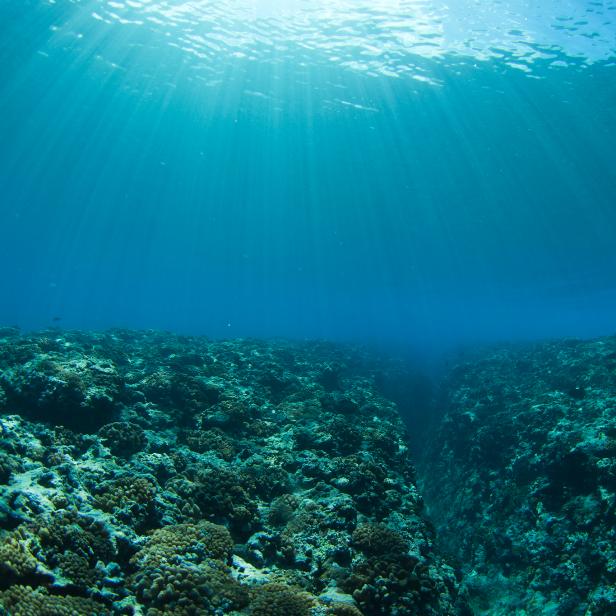
Getty Images/Kelly Cestari
Scientists Have Captured Video Footage of Mating Deep-Sea Anglerfish for the First Time
Get a glimpse of this super secretive fish's mating ritual.
It's probably a little weird to get super jazzed about seeing fish mating. But when it's the unapologetically odd deep-sea anglerfish, it's a completely different story.

Shutterstock
Stage 5 Clinger
You might not know the name, but you definitely know the face. The anglerfish is that kind of blobby fish with a sharp-toothed frown and an illuminated lure than dangles just in front of its mouth. Due to the fact that navigating the deepest depths of the ocean is plagued by several obstacles, scientists have barely been able to observe live anglerfish in their natural habitats, much less two of them getting, er, friendly. But a video shot in 2016 and released in Science magazine in 2018 provides a stunning new insight: It's the first ever to show a sexually united pair of anglerfish.
And the way they mate is certainly unique. The big-mouthed, lure-dangling fish you picture in your head when you hear of an anglerfish is a female; the male is about one-tenth the size and looks relatively unremarkable. To mate, the male literally fuses himself onto the female, acting as a permanent sperm provider. Until now, we've never seen the unique copulation live, in action. "I've been studying these [animals] for most of my life and I've never seen anything like it," says Ted Pietsch, a deep-sea fish researcher at the University of Washington in Seattle. "So you can see how rare and important this discovery is. It was really a shocker for me."
Check out the oddly beautiful footage below:
VIDEO HERE
"Funny Form"
The video was shot by deep-sea explorers Kirsten and Joachim Jakobsen at a depth of 800 meters (half a mile) in a submersible. They had been on a 5-hour dive near São Jorge Island when "something with a funny form" caught their attention, according to Kirsten. For the next 25 minutes, the pair followed around a 16-centimeter (6-inch) long anglerfish female in their submersible, capturing the creature on film. There are more than 160 species of anglerfish, and after the duo sent the footage to Pietsch, the fish was identified as the species as Caulophryne jordani, known as the fanfin angler. Pietsch was struck by the fish's unexpected gracefulness and also was surprised to note that the light at the ends of the fish's filaments may be bioluminescent, just like the main lure.
Another lesson gained from the footage involved the attached male fish (poor guy). Bruce Robison, a deep-sea ecologist at the Monterey Bay Aquarium Research Institute, noted to Science magazine that the male, though permanently fused to the female's belly, was still surprisingly agile and flexible. "There's no way I would have ever guessed that from a [museum] specimen," he said. As technology advances, we can expect to continue learning about these bizarre creatures of the deep and see even more weird videos like this one.
This article first appeared on Curiosity.com.


















